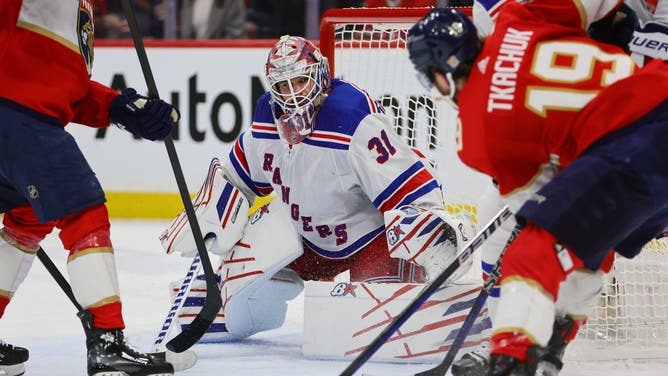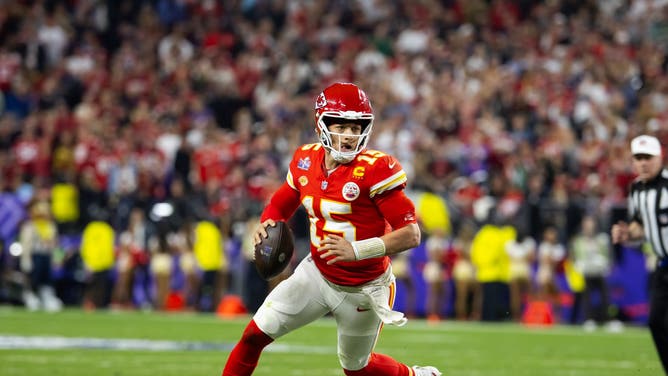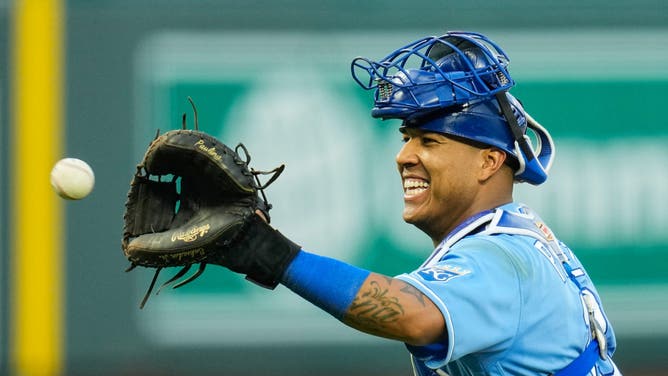Here Are The Three Hardest Positions To Play In American Sports, And Why Quarterback Isn't No. 1
Most of us played some form of sports growing up. Some of us were probably good at certain positions in that sport (I was a stellar first baseman for my high school’s freshman baseball team if I do say so myself).
At some point in our athletic careers, we probably considered trying to play a certain difficult position in a sport. For me, that came in the form of wanting to play center for my varsity basketball team, but I realized I wasn’t cut out for it.
That got me thinking: if it’s hard to play center at the high school basketball level, there must be other positions that are even harder, especially as you get to the professional level. Then I thought, "What are the hardest positions to play in any given sport in American sports?"
This late Friday afternoon musing produced the list you will see below. After thinking about all the professional American sports in existence and all the various positions therein, I have ranked the three most difficult to play.
Got any takes of your own you want to share? Let’s hear ‘em: john.simmons@outkick.com.
No. 3 - Hockey Goalie
Hockey goalies are tasked with stopping pucks from entering a 4-foot by 6-foot net. While that job description is simple enough, the art of doing so is anything but.
Goalies wear protective gear that can weigh anywhere from 40-50 pounds altogether, from leg pads to masks to blockers. Wearing that much extra stuff is hard enough, but imagine having to do it on skates.

Guys like New York Rangers goaltender Igor Shesterkin (31) are some of the most flexible and talented athletes on the planet. Photo: Sam Navarro-USA TODAY Sports
To make matters worse, goalies have to do it performing the most unnatural lower-body movements imaginable. Having anything less than exceptional flexibility ends your chances of being a goalie.
(I have a theory that all hockey goalies are somehow descended from Mr. Fantastic, and I’m only half joking. What these guys can do with their lower bodies is not normal.)
That’s just before you get on the ice, then comes the part about actually stopping the pucks.
A majority of the shots that goalies have to face come at them at no slower than 80 mph. On top of that, lots of times the goalies cannot see where the puck is coming from and have to guess where they think the shot will go. Sometimes shots get deflected, adding to the difficulty.
And that’s not even mentioning doing a split, all while trying to cover six feet of ground as you slide from post to post. Your reaction time and instincts have to be superb, or else you don't make the cut. When you add it all up, it’s no wonder this cracks the list.
No. 2 - Quarterback
I think anyone who’s even a casual football fan knows this is the hardest position to play in America’s most complicated sport. Here’s a short list of everything that a quarterback has to read before even running a play:
- What the play is
- What routes the receivers are running
- What the defense looks like it's doing and where blitzes could be coming from
- How to change the offensive line’s protection scheme if necessary
- Audibles to call to receivers and running backs if he wants them to switch routes

Patrick Mahomes makes playing quarterback look easy, but it by no means is. Photo: Mark J. Rebilas-USA TODAY Sports
Is your head spinning yet? Because mine certainly is. You have to be able to process information at an elite level in the most stressful of situations.
Then there comes the actual part of running the play. Based on all that information, the quarterback will oftentimes have at most three seconds to pick where to go with a ball, while several 300-pound linemen are doing all they can to crumple him to the ground.
So yeah, it’s hard, and that doesn’t even account for the times a quarterback is often tasked to run the ball (like Lamar Jackson or Josh Allen). Then he can get jarred by linebackers eager to pummel him.
It’s a demanding position, no doubt. But it’s still not the most difficult position in American sports.
That honor belongs to…
No. 1 - Catcher
Go ahead, roll your eyes and fire your emails telling me how awful of a take this is. But catcher is the hardest position to play for several reasons.
First, like goalies, you’re constantly hunching down. While they might not be as flexible as goalies, it's wildly uncomfortable to crouch as low as they do for about three hours per game. Do that over a 162-game season, and you’re going to have to fight through some pain.

Kansas City Royals catcher Salvador Perez catches a ball during the ninth inning against the Detroit Tigers at Kauffman Stadium in Kansas City in 2021. Photo: Jay Biggerstaff-USA TODAY Sports
Then you have to act as the field general for how your defense needs to set up, and you are the only person who can naturally see the whole field. Next, you have to figure out how to best fool a batter based on his stance and where he lines up in the batter’s box.
That’s the easy part.
Once you’ve done all that, you have to catch around 130 pitches per game from all the pitchers. Some come at you at 100+ MPH (especially if you’re catching for Paul Skenes), and even the "slow" ones (like curveballs, which travel between 75-80 mph) change directions with a nauseating pace.
Oh, then there’s the part where guys can sometimes run into you at full speed while you’re trying to guard home plate. In essence, you’re combining the physical demands of goalie and the mental demands of quarterback when you play catcher. And then you have to face MLB pitching three times a game as a hitter? Sheesh.
Maybe you’re not convinced that being a catcher is harder than being a quarterback, but I’ll offer you one more point to consider.
Roughly a third of the time (depending on the offense), a quarterback hands off the ball to a running back. While that can be complicated as well, it takes the responsibility of his shoulders for about 33 percent of all the plays. Catchers can’t take pitches off, because if they let two of them get by in a game, they’ve had a "bad" night.
…
That's my list, (somewhat) short and sweet. Hopefully this gives you some fun debate material as you hang with your fellow sports fans this fine Friday evening. If you’ve got any reactions to the piece you want to share, you know where to find me: john.simmons@outkick.com.